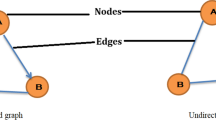Abstract
Active Networks paradigm integrated with distributed data fusion has the potential to significantly reduce energy dissipation in wireless sensor networks, where energy conservation is the most challenging issue. This work aims to minimize energy cost when distributed data fusion is deployed for the Active Networks computing paradigm. First we propose an optimal solution for mapping task graph of distributed data fusion application into network. Optimal solution uses an exhaustive search algorithm for finding the placements with minimized power consumption. However, optimal solution has high computational complexity—O(mn k), where n denotes the number of network nodes, m is the number of fusion functions, and k is the maximum number of children a fusion function has in task graph and its children are also fusion functions. Then, an approximate solution with low complexity (O(mlog n + log2 m)) is proposed called P2lace, which includes two phases, task graph partition and task graph placement. Finally, an extensive evaluation compares approximate solution with optimal solution. The results show that approximate solution is scalable with different task graph characteristics and network size and only causes slightly more transmission cost than optimal solution. And the algorithm without optimizing is shown to be applicable to the network, where the sink node does not have global information of entire network.








Similar content being viewed by others
References
Boulis, A., Han, C. & Srivastava, M. (2003). Design and implementation of a framework for efficient and programmable sensor networks. In Proceedings of the 1st international conference on Mobile systems, applications and services, pp. 187–200. ACM.
Chatzimilioudis, G., Hakkoymaz, H., Mamoulis, N. & Gunopulos, D. (2009). Operator placement for snapshot multi-predicate queries in wireless sensor networks. In Mobile Data Management: Systems, Services and Middleware, 2009. MDM’09. Tenth International Conference on, pp. 21–30. IEEE.
Chen, M., Kwon, T., Yuan, Y., Choi, Y., Leung, V. (2007). Mobile agent-based directed diffusion in wireless sensor networks. EURASIP Journal on Applied Signal Processing, (1), 219.
Coman, A., Nascimento, M. & Sander, J. (2008). On join location in sensor networks. In International conference on mobile data management, 2007, pp. 190–197. IEEE.
Durrant-Whyte, H. (1988). Sensor models and multisensor integration. The International Journal of Robotics Research, 7(6), 97.
Heidemann, J., Silva, F., Intanagonwiwat, C., Govindan, R., Estrin, D. & Ganesan, D. (2001). Building efficient wireless sensor networks with low-level naming. ACM SIGOPS Operating Systems Review 35(5), 146–159.
Intanagonwiwat, C., Estrin, D., Govindan, R. & Heidemann, J. (2002). Impact of network density on data aggregation in wireless sensor networks. In Proceedings of 22nd international conference on distributed computing systems, 2002, pp. 457–458. IEEE.
Intanagonwiwat, C., Govindan, R. & Estrin, D. (2000). Directed diffusion: A scalable and robust communication paradigm for sensor networks. In Proceedings of the 6th annual international conference on mobile computing and networking, pp. 56–67. ACM.
Intanagonwiwat, C., Govindan, R., Estrin, D., Heidemann, J., Silva, F. (2003). Directed diffusion for wireless sensor networking. IEEE/ACM Transactions on Networking, 11(1), 2–16.
Jain, N., Biswas, R., Nandiraju, N. & Agrawal, D. (2005). Energy aware routing for spatio-temporal queries in sensor networks. In Wireless communications and networking conference, 2005 IEEE, vol. 3, pp. 1860–1866.
Levis, P. & Culler, D. (2002). Mate: A tiny virtual machine for sensor networks. ACM SIGARCH Computer Architecture News, 30(5), 85–95.
Luo, H., Liu, Y. & Das, S. (2006). Routing correlated data with fusion cost in wireless sensor networks. IEEE Transactions on Mobile Computing, 1620–1632.
Luo, H., Luo, J., Liu, Y. & Das, S. (2006). Adaptive data fusion for energy efficient routing in wireless sensor networks. IEEE Transactions on Computers, 55(10), 1286–1299.
Luo, R., Yih, C.& Su, K. (2002). Multisensor fusion and integration: Approaches, applications, and future research directions. IEEE Sensors Journal, 2(2), 107–119.
Manjunatha, P., Verma, A. & Srividya, A. (2009). Multi-sensor data fusion in cluster based wireless sensor networks using fuzzy logic method. In Industrial and Information Systems, 2008. ICIIS 2008. IEEE Region 10 and the third international conference on, pp. 1–6. IEEE.
Nakamura, E., Loureiro, A. & Frery, A. (2007). Information fusion for wireless sensor networks: Methods, models, and classifications. ACM Computing Surveys (CSUR), 39(3), 9.
Psounis, K. (2009). Active networks: Applications, security, safety, and architectures. Communications Surveys & Tutorials, IEEE 2(1), 2–16.
Qi, H., Xu, Y. & Wang, X. (2003). Mobile-agent-based collaborative signal and information processing in sensor networks. Proceedings of the IEEE, 91(8), 1172–1183.
Ramachandran, U., Kumar, R., Wolenetz, M., Cooper, B., Agarwalla, B., Shin, J., Hutto, P. & Paul, A. (2006). Dynamic data fusion for future sensor networks. ACM Transactions on Sensor Networks (TOSN), 2(3), 404–443.
Son, J., Pak, J., Kim, H. & Han, K. (2007). A decentralized hierarchical aggregation scheme using fermat points in wireless sensor networks. Applications of Evolutionary Computing,153–160.
Song, Y., Lee, S., Ko, Y. (2005). Ferma: An efficient geocasting protocol for wireless sensor networks with multiple target regions. Embedded and Ubiquitous Computing, 1138–1147.
Srivastava, U., Munagala, K. & Widom, J. (2005). Operator placement for in-network stream query processing. In Proceedings of the twenty-fourth ACM SIGMOD-SIGACT-SIGART Symposium on principles of database systems, pp. 250–258. ACM.
Su, W. & Bougiouklis, T. (2007). Data fusion algorithms in cluster-based wireless sensor networks using fuzzy logic theory. In Proceedings of the 11th conference on 11th WSEAS international conference on communications, Vol. 11, pp. 291–299. World Scientific and Engineering Academy and Society (WSEAS).
Sung, W. (2010), Multi-sensors data fusion system for wireless sensors networks of factory monitoring via BPN technology. Expert Systems with Applications, 37(3), 2124–2131.
Xu, Y. & Qi, H. (2004). Distributed computing paradigms for collaborative signal and information processing in sensor networks. Journal of Parallel and Distributed Computing, 64(8), 945–959.
Author information
Authors and Affiliations
Corresponding author
Rights and permissions
About this article
Cite this article
Lu, Z., Tan, SL. & Biswas, J. Fusion function placement for Active Networks paradigm in wireless sensor networks. Wireless Netw 19, 1525–1536 (2013). https://doi.org/10.1007/s11276-013-0548-2
Published:
Issue Date:
DOI: https://doi.org/10.1007/s11276-013-0548-2




